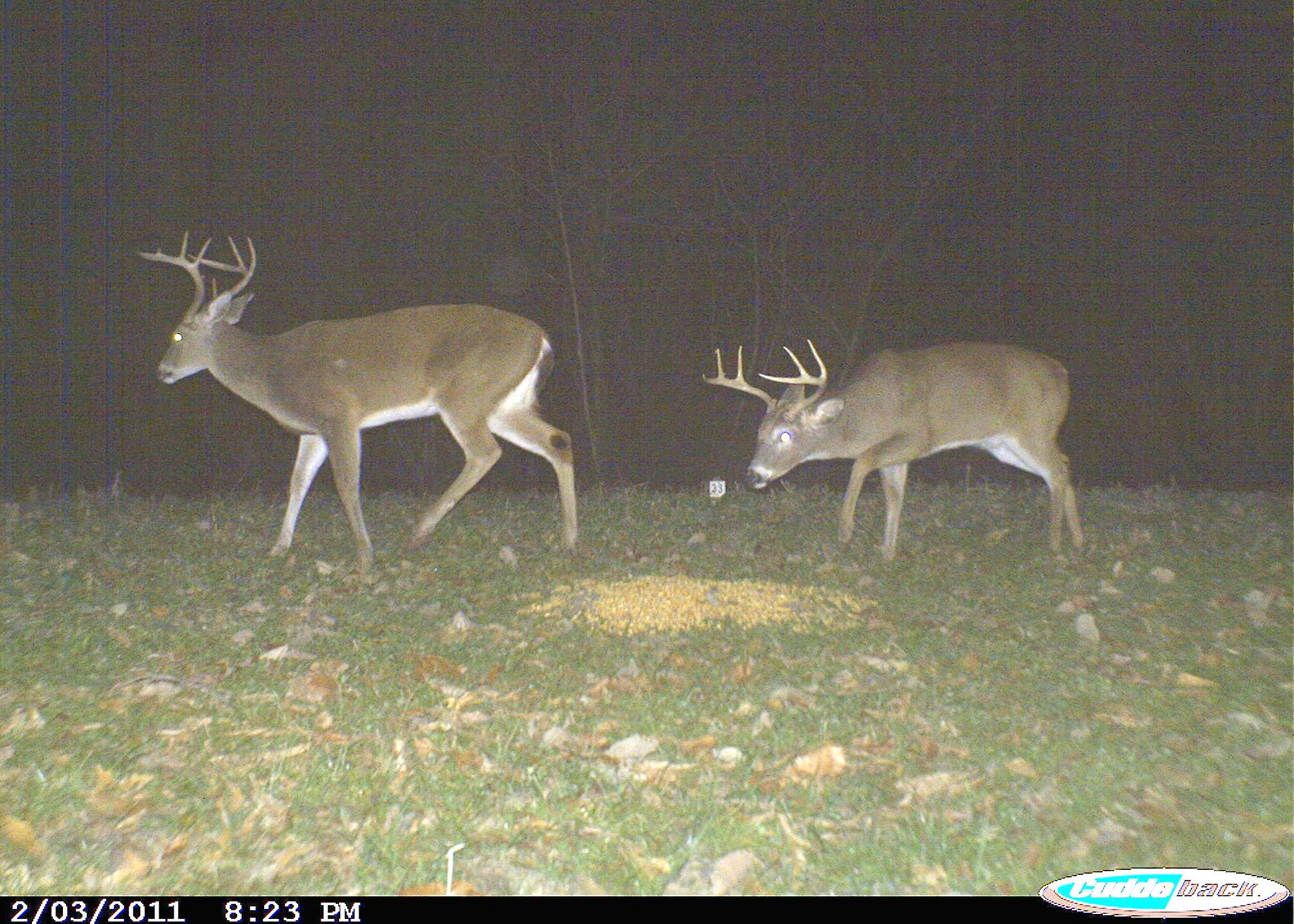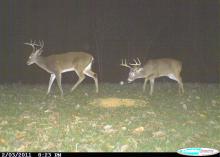Information Possibly Outdated
The information presented on this page was originally released on June 13, 2014. It may not be outdated, but please search our site for more current information. If you plan to quote or reference this information in a publication, please check with the Extension specialist or author before proceeding.
Game cameras help with deer management
MISSISSIPPI STATE -- A camera that began as a cool gadget for photographing bucks and monitoring food plots or game trails has become an important survey instrument for managing deer populations.
White-tailed deer management involves more than managing habitats and planting supplemental food plots. Proper deer management requires managing populations as well. Deer managers can use game cameras to estimate deer population characteristics and develop good harvest management strategies. This will help maintain a healthy and productive deer herd.
Improvements in the quality, storage capabilities, and durability of cameras make camera surveys feasible and fun.
A properly conducted game camera survey can reveal deer population characteristics, such as buck-doe ratio, fawn crop and age structure. It can provide insight into the demographics and productivity of a particular deer population.
Buck-doe ratio is the number of adult males compared to the number of adult females in a deer population. A high concentration of females, such as five adult does for every one adult buck, is a strong indicator of over-harvest of bucks and under-harvest of does.
Such a heavily skewed buck-doe ratio might also mean there is an overpopulation problem. Increasing doe harvest would increase the amount of food available per deer, which improves deer quality and productivity.
Annual fawn crop estimates are a way to gauge deer herd productivity and help form the basis for harvest recommendations. For example, if one of your management objectives is to stabilize population growth, then adult deer harvest should be about equal to that of the previous year’s fawn crop.
What if the estimated fawn crop numbers are low in proportion to adult doe numbers in the population? This can be a result of several factors. Overpopulation or lack of habitat management can translate to does in poor physical condition, which harms reproduction and fawn survival. Fawn predation rates may be high because of inadequate cover or too many predators, such as coyotes.
Finally, the age structure of a deer population is the percentage of animals in each age class -- one year old, two years old, and so forth. If producing larger-antlered bucks is one of your management goals, then knowing something about buck age structure is critical.
Most deer managers like to see somewhat equal numbers of younger and older bucks. An even age structure indicates that young bucks are being produced and many of them are surviving to reach the three- to five-year-old age classes. On the other hand, a deer population that consists mostly of one- to two-year-old bucks and very few three-year-old and older bucks indicates many bucks are being harvested at a young age.
While nutrition is certainly a factor in antler growth and development, the best formula for producing large antlers is to allow young bucks to reach those older age classes.
When compared with other survey methods, game camera surveys provide the best potential for a reliable, cost-effective method to estimate deer population characteristics. What’s more, using trail cameras to gain valuable information about the deer herd you are managing is a lot of fun! Before conducting a deer survey, be sure and check with Mississippi Department of Wildlife, Fisheries & Parks regarding regulations and required permits.
For more information about deer surveys, read the Mississippi State University Extension Service publication 2788, “Conducting Camera Surveys to Estimate Population Characteristics of White-Tailed Deer.”

Editor’s Note: Extension Outdoors is a column authored by several different experts in the Mississippi State University Extension Service.







